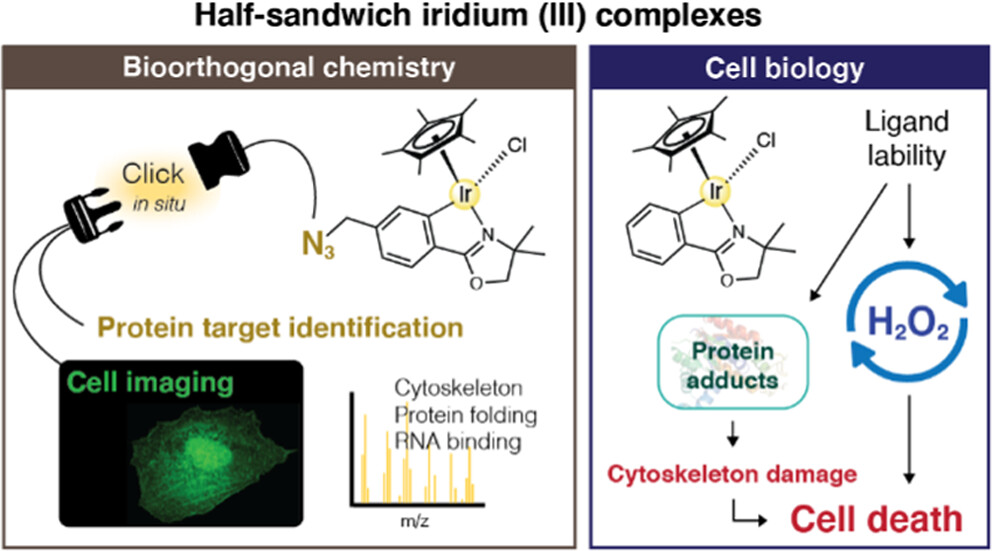Identification of Cellular Protein Targets of a Half-Sandwich Iridium (III) Complex Reveals Its Dual Mechanism of Action via Both Electrophilic and Oxidative Stresses
Robin Ramos , Anthi Karaiskou, Candice Botuha, Sadek Amhaz, Michaël Trichet, Florent Dingli, Jérémy Forté, France Lam, Alexis Canette, Chloé Chaumeton, Murielle Salome, Thomas Chenuel, Céline Bergonzi, Philippe Meyer, Sylvain Bohic, Damarys Loew, Michèle Salmain, and Joëlle Sobczak-Thépot
Identification of intracellular targets of anticancer drug candidates provides key information on their mechanism of action. Exploiting the ability of the anticancer (C∧N)-chelated half-sandwich iridium(III) complexes to covalently bind proteins, click chemistry with a bioorthogonal azido probe was used to localize a phenyloxazoline-chelated iridium complex within cells and profile its interactome at the proteome-wide scale. Proteins involved in protein folding and actin cytoskeleton regulation were identified as high-affinity targets. Upon iridium complex treatment, the folding activity of Heat Shock Protein HSP90 was inhibited in vitro and major cytoskeleton disorganization was observed. A wide array of imaging and biochemical methods validated selected targets and provided a multiscale overview of the effects of this complex on live human cells. We demonstrate that it behaves as a dual agent, inducing both electrophilic and oxidative stresses in cells that account for its cytotoxicity. The proposed methodological workflow can open innovative avenues in metallodrug discovery.

